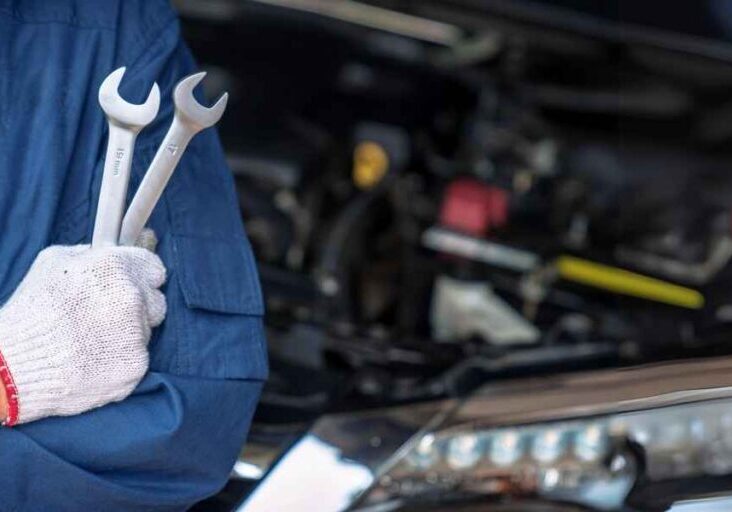Your vehicle extends beyond a simple means of transportation; it stands as a trusted ally in your life’s journey. Its communication comes in a unique language: alert lights. These small, glowing indicators on your dashboard may initially seem puzzling, but worry not! Our comprehensive guide will decode the enigma of these signal lights, offering insight into their meanings and the importance of heeding their alerts. So fasten your seatbelts as we navigate the medley of vivid signals deployed by your automobile to converse with you.
Why Do Cars Have Warning Lights?
Before delving into the nuances, let’s delineate what we mean by warning lights. In the context of contemporary vehicles, alert lights serve as a bridge of understanding between your automobile and yourself. They operate as silent sentinels, observing various systems and signaling you when an issue necessitates attention. Neglecting these notifications equates to disregarding your car’s well-being assessment.
Common Warning Lights and What They Mean
1. Check Engine Light: The Jack-of-All-Trades
- What it Looks Like: An engine icon.
- What it Indicates: The check engine light is one of the most common warning lights that you may encounter in your vehicle. A multitude of issues ranging from a loose gas cap to a more serious engine problem. It’s a general alert that something needs attention under the hood. It can indicate a wide range of issues, from something as simple as a loose gas cap to more serious engine problems. If this light comes on, it is important to have your vehicle checked by a professional to determine the cause and prevent further damage.
2. Battery Light: Power Struggles
- What it Looks Like: A battery-shaped symbol.
- What it Indicates: The battery light indicates an issue with the vehicle’s charging system. This could be due to a faulty alternator, a loose or damaged battery connection, or a weak battery. If this light comes on, it is crucial to address the problem immediately as it could lead to a dead battery and a stranded vehicle. A professional should inspect the charging system to identify and fix the underlying issue.
3. Oil Pressure Warning: Lubrication Matters
- What it Looks Like: An oil can symbol.
- What it Indicates: The oil pressure warning light indicates a problem with the vehicle’s oil pressure. This could be caused by a variety of issues such as low oil level, a clogged oil filter, or a malfunctioning oil pump. Ignoring this warning light could result in severe engine damage and costly repairs. It is important to check the oil level and quality immediately and consult a professional if necessary.
4. Brake System Warning: Pump the Brakes
- What it Looks Like: An exclamation mark inside a circle.
- What it Indicates: The brake system warning light indicates a problem with the vehicle’s braking system. This could be caused by low brake fluid, worn brake pads, or a malfunctioning brake system. Ignoring this warning light could result in decreased braking effectiveness and potentially lead to accidents. It is important to pump the brakes a few times to see if the light goes off, but if it persists, it is crucial to have the brake system inspected and repaired by a professional as soon as possible.
5. Tire Pressure Monitoring System (TPMS): Keep it Rolling
- What it Looks Like: An exclamation mark inside a tire.
- What it Indicates: The TPMS warning light indicates that there is a problem with the tire pressure. It could mean that one or more tires have low pressure, which can result in decreased fuel efficiency, tire wear, and potentially a blowout. It is important to check the tire pressure and inflate them to the recommended levels. If the light persists, it may indicate a faulty sensor or a punctured tire that needs immediate attention. Failure to address this warning can lead to unsafe driving conditions and potential accidents.
6. ABS Warning Light: Anti-Lock Braking System
- What it Looks Like: ABS letters inside a circle.
- What it Indicates: The ABS warning light indicates a problem with the Anti-Lock Braking System. This system helps prevent the wheels from locking up during sudden stops or on slippery surfaces. If the light is on, it may indicate a malfunction in the ABS system, which could affect the vehicle’s ability to stop quickly and safely. It is important to have the ABS system checked by a professional to ensure proper functioning and avoid potential accidents.
7. Transmission Temperature: Cool Down!
- What it Looks Like: A thermometer.
- What it Indicates: The transmission temperature warning light indicates that the transmission fluid is overheating. This could be due to towing heavy loads, driving in stop-and-go traffic, or a malfunction in the cooling system. If the light is on, it is advised to pull over and let the transmission cool down to prevent damage to the transmission components and ensure smooth shifting. It is recommended to have the transmission system checked by a professional to identify the underlying cause and prevent further issues.
8. Airbag Warning: Safety First
- What it Looks Like: A person sitting with an airbag in front.
- What it Indicates: There may be a problem with the airbag system in the vehicle. This warning light is designed to alert the driver that the airbags may not deploy in the event of an accident. It is crucial to have the airbag system inspected and repaired by a professional as soon as possible to ensure the safety of all occupants in the vehicle.
9. Coolant Temperature Warning: Don’t Overheat
- What it Looks Like: A thermometer inside a wave symbol.
- What it Indicates: The coolant temperature warning light is designed to notify the driver of an overheating engine. When this light illuminates, it means that the engine’s coolant levels are either low or the system is experiencing a malfunction. It is important to address this issue immediately as an overheating engine can cause severe damage to the vehicle if left unattended.
10. Gas Cap Warning: Keep it Sealed
- What it Looks Like: A gas cap.
- What it Indicates: The gas cap warning light is designed to alert the driver if the gas cap is not properly sealed. When this light illuminates, it means that there is a potential for fuel vapors to escape, which can result in decreased fuel efficiency and increased emissions. It is important to ensure that the gas cap is tightened securely to prevent any issues and maintain the optimal performance of the vehicle.
What to Do When a Warning Light Appears?
So, your car has blinked a warning at you. Now what? Here are some steps to take:
- Don’t Panic: In many cases, the issue might be minor.
- Check Your Manual: Your car’s manual is your best friend. It often contains information about what each warning light means and what action to take.
- Inspect the Light: Take note of the color and whether it’s flashing or steady. A flashing red light, for example, is more urgent than a steady yellow one.
- Check Gauges: If the warning light is related to a specific gauge (e.g., temperature or oil pressure), check the gauge to see if it’s in the normal range.
- Address Immediately if Urgent: Some warnings, like the engine or battery light, might require immediate attention. In such cases, it’s advisable to pull over safely and seek assistance.
- Schedule Inspection: Even if the issue seems minor, it’s a good idea to schedule a professional inspection. Some problems might not be immediately apparent but can worsen over time.
The Importance of Regular Auto Repair Services
Understanding warning lights is just the beginning. Regular auto repair services are the backbone of your car’s health. Here’s why:
- Preventive Maintenance: Regular services can catch potential issues before they turn into major problems, saving you time and money.
- Extended Lifespan: Well-maintained cars tend to have a longer lifespan. Regular services contribute to the longevity of your vehicle.
- Fuel Efficiency: A well-maintained car operates more efficiently, contributing to better fuel economy.
- Safety First: Routine inspections ensure that your car is in optimal condition, enhancing safety for you and your passengers.
Choosing the Right Auto Repair Services
Now that you’re well-versed in the language of warning lights, choosing the right auto repair services becomes crucial. Here are some tips:
- Experience Matters: Look for a service with a proven track record. Experience often translates to expertise.
- Certifications and Training: Ensure that the technicians are certified and undergo regular training to stay updated with the latest technologies.
- Customer Reviews: Check online reviews and testimonials. What do other car owners say about their experiences with the auto repair service?
- Transparent Communication: Choose a service that communicates transparently about the repairs needed, costs, and the timeline for the work.
- Warranty: A reputable auto repair service stands behind its work. Inquire about the warranty offered on both parts and labor.
Conclusion: Navigating the Road of Car Maintenance
It is your job as a car owner to understand and respond to its indications. Regular auto repair services by experts are the link between you and a trouble-free vehicle. So, the next time a warning light flickers on your dashboard, remember, it’s your car’s way of saying, “Hey, pay attention, I need some love!” Listen, comprehend, and confidently embark on the road of car maintenance. Have a safe and enjoyable drive!
Anthony's Auto Service
Share this article:
You May Also Like



